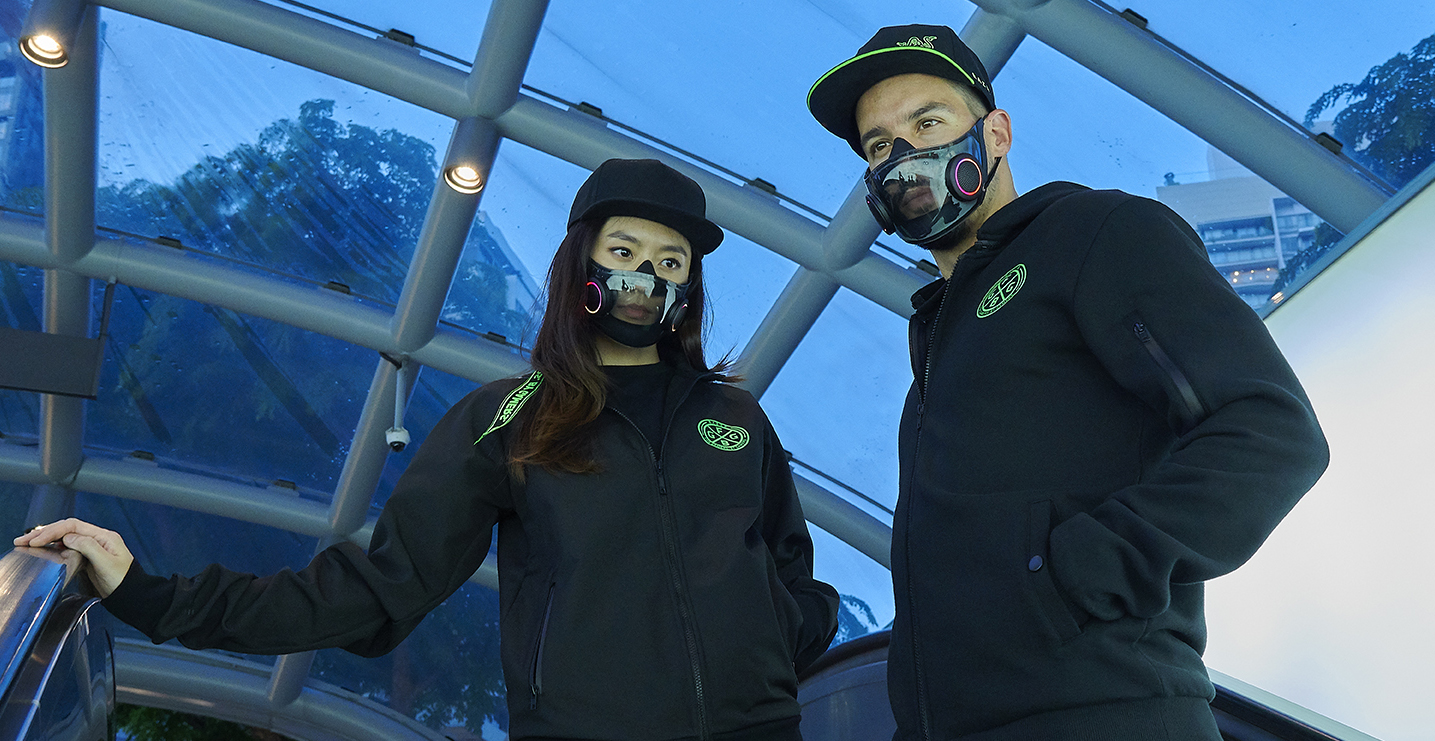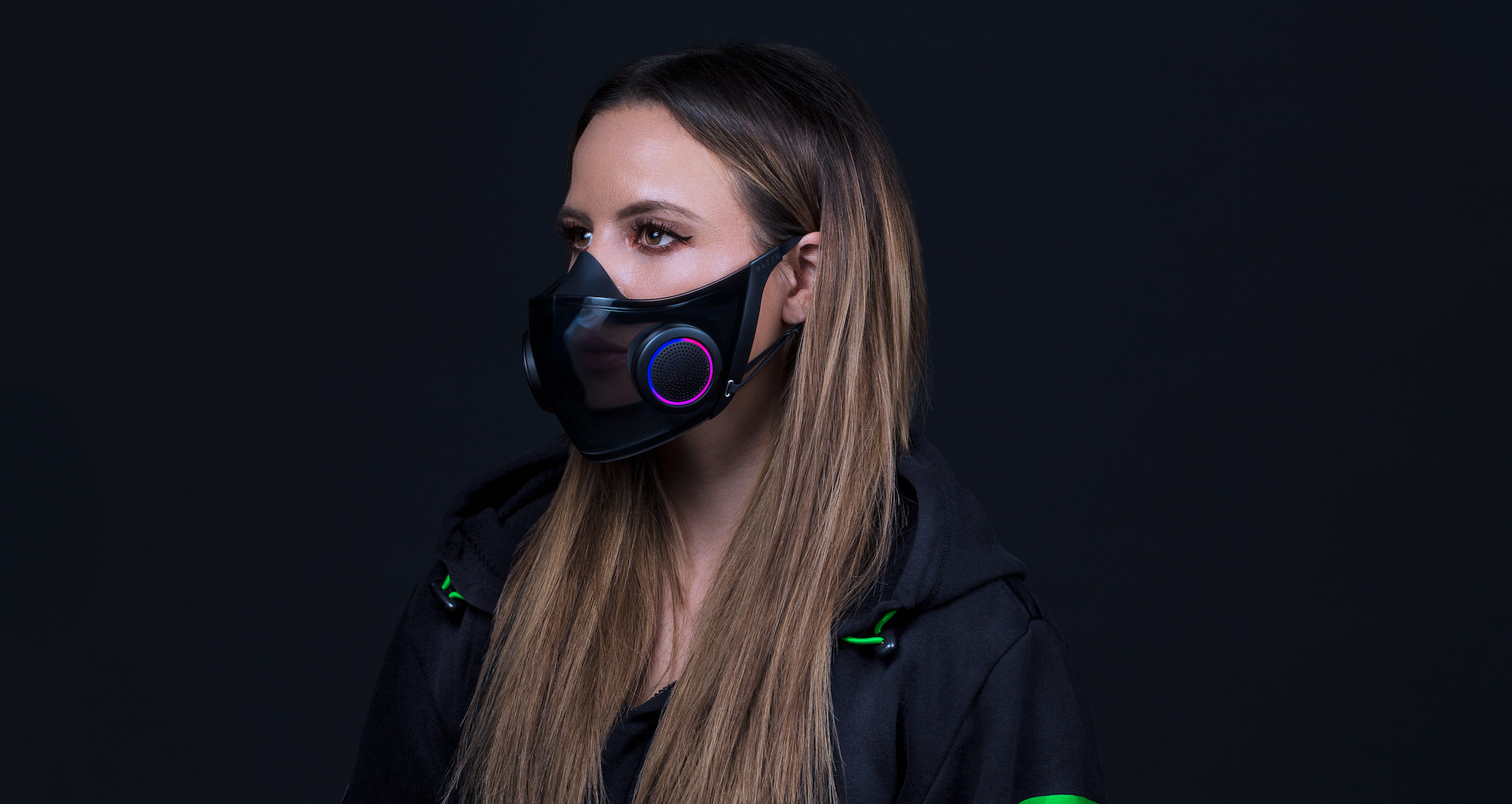Razer's face mask features transparent design, RGB lighting and voice amplifier
Razer's new concepts include an RGB face mask and a gaming chair with a retractable screen

Every year at CES, Razer pitches one or two “concept” products that may or may not ever come to market. In addition to laptops, mice, headsets and whatever else is on the agenda, Razer likes to pitch something imaginative, simply to see whether its futuristic ideas are feasible — and, no doubt, how potential customers might react.
This year, Razer’s concept projects include Project Hazel and Project Brooklyn: a futuristic face mask to address public health concerns, and a gaming chair that doubles as an immersive entertainment center, respectively.
In the past, Razer’s concepts have included a full-fledged racing simulator, a laptop that ran off of a smartphone and a laptop with three screens. These concepts don’t often become salable products, although its “Project Breadwinner” toaster did (surprisingly) become a reality, so anything is possible.
Project Hazel

Project Hazel is the timelier of Razer’s two concepts from CES 2021. This wearable device is a face mask, much like the ones we’ve been encouraged to wear to curb the COVID-19 pandemic. While cloth masks reduce the risk of disease, however, Razer pointed out how they create some problems. Not being able to see people’s mouths makes it difficult to read facial expressions (or lips, for the hearing-impaired), while cloth tends to muffle conversation and does an imperfect job at filtering out microscopic particles.
Project Hazel, by contrast, is a reusable mask with a more rigid structure and a transparent faceplate. It relies on two rechargeable air filters (with programmable RGB highlights, naturally), and even uses Razer VoiceAmp technology to clear up whatever the wearer is saying. In theory, Project Hazel is more sanitary, more durable and more functional than an everyday cloth mask.
Still, there are some roadblocks that might prevent Project Hazel from becoming a reality. The first is that mask usage is (hopefully) about to become a lot less necessary, thanks to a widespread COVID vaccination project. The second is that a device like Project Hazel would necessarily be quite expensive, because of all the parts that go into it; reusable cloth masks, which are relatively effective at preventing the spread of illness, often go for $15 or less.
The other interesting observation is that Razer has already arguably obviated the need for Project Hazel with its stylish cloth face masks. Not only are these masks safe and affordable, but Razer has actually donated a considerable amount of them to frontline healthcare workers, taking tangible steps to fight a pandemic. Project Hazel may have cooler features than a standard cloth mask, but the truth is that Razer has already done a lot of good with the materials it had on hand.
Get instant access to breaking news, the hottest reviews, great deals and helpful tips.
Project Brooklyn

The more traditional Razer Concept from CES 2021 is Project Brooklyn, which combines a rollable OLED screen with the design from the Razer Iskur gaming chair. It’s essentially a gaming pod, like the gargantuan Acer Thronos, but with a much more restrained, minimalist design.
Here’s how it works: You sit in the chair, which looks and functions essentially like an Iskur. You lay out a bar in front of you, which supports a keyboard and a mouse. A panoramic OLED screen rolls down from above. As you play games, the chair’s built-in haptics respond to what’s happening onscreen, like a full-body DualSense controller. There are even RGB LED strips on the side of the Brooklyn, which can keep spectators entertained with colorful patterns.
In theory, it’s easy to see how Project Brooklyn might benefit gamers, particularly those who don’t have enough space for a full entertainment center or dedicated PC desk. On the other hand, it relies on a lot of technology that isn’t available to consumers yet, and probably won’t be priced affordably for years to come. Still, it’s not a ridiculous idea, and it certainly has a much more approachable design than the Thronos or — lest we forget — the terrifying scorpion chair.
Since Project Brooklyn is just a concept, there’s no way to gauge how much it might cost, or when it might come out. But it’s at least an interesting idea that solves a real problem for gamers without much extra space.
For gamers who are interested in something a little more tangible, Razer also recently announced upgrades for its Razer Blade 15 and Razer Blade Pro 17 gaming laptops. You can now get them with Nvidia GeForce RTX 30-series GPUs built in. It’s not quite as futuristic as an RGB mask or a rollable OLED gaming chair, but it’s about the best we can do in 2021.

Marshall Honorof was a senior editor for Tom's Guide, overseeing the site's coverage of gaming hardware and software. He comes from a science writing background, having studied paleomammalogy, biological anthropology, and the history of science and technology. After hours, you can find him practicing taekwondo or doing deep dives on classic sci-fi.
